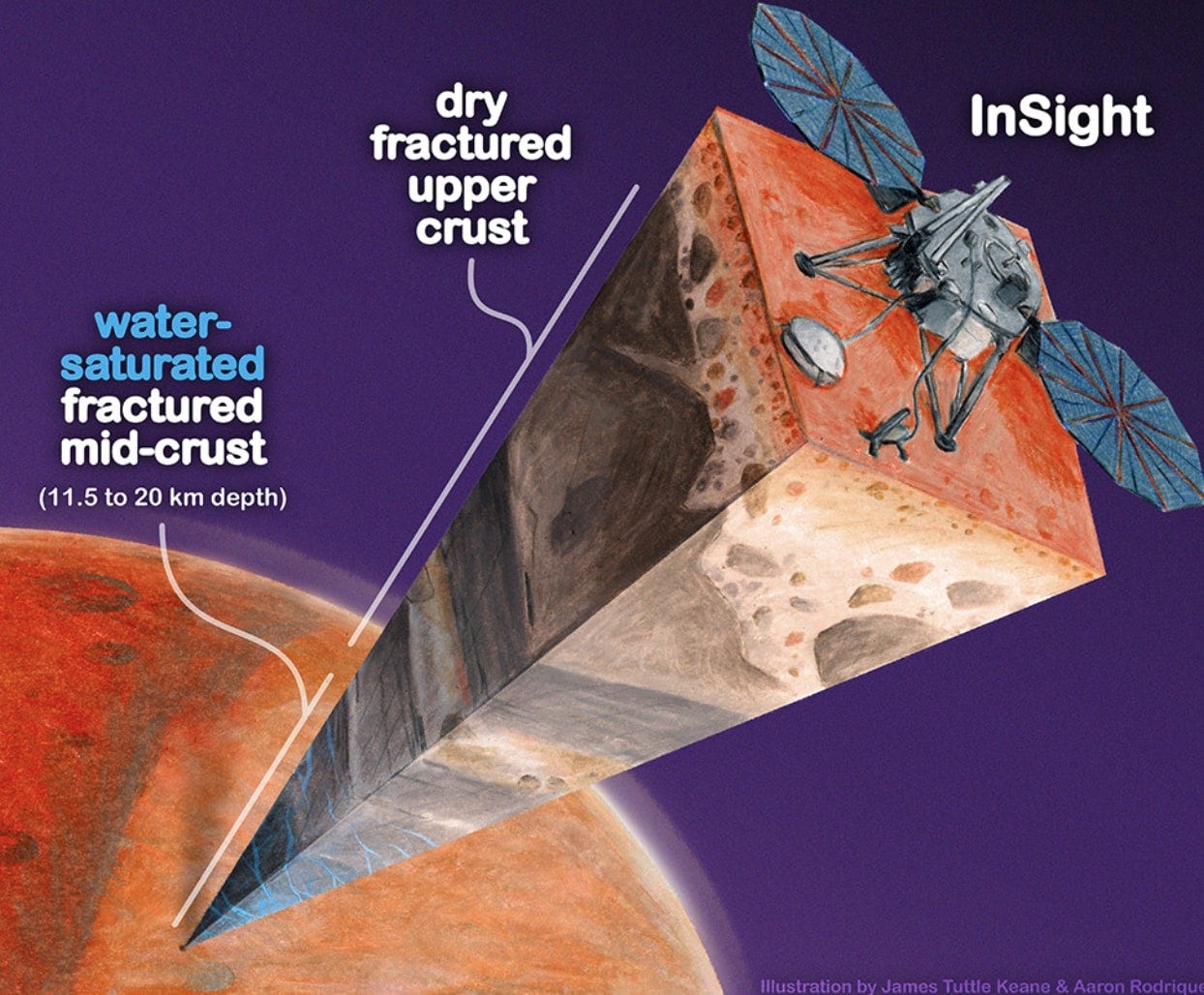The data from NASA’s Insight lander allowed the scientists to estimate that the amount of deep groundwater could cover the entire planet to a depth of between 1 and 2 kilometers, or about a mile.
A cutout of the Martian interior beneath NASA’s Insight lander. The top 5 kilometers of the crust appear to be dry, but a new study provides evidence for a zone of fractured rock 11.5-20 km below the surface that is full of liquid water — more than the volume proposed to have filled hypothesized ancient Martian oceans.
James Tuttle Keane and Aaron Rodriquez, courtesy of Scripps Institution of Oceanography
There is lots of evidence — river channels, deltas and lake deposits, as well as water-altered rock — supports the hypothesis that water once flowed on the planet’s surface. But that wet period ended more than 3 billion years ago, after Mars lost its atmosphere. Planetary scientists on Earth have sent many probes and landers to the planet to find out what happened to that water — the water frozen in Mars’ polar ice caps can’t account for it all — as well as when it happened, and whether life exists or used to exist on the planet.
The new findings are an indication that much of the water [PNAS- Liquid water in the Martian mid-crust] did not escape into space but filtered down into the crust.
The Insight lander was sent by NASA to Mars in 2018 to investigate the crust, mantle, core and atmosphere, and it recorded invaluable information about Mars’ interior before the mission ended in 2022.
It’s located in tiny cracks and pores in rock in the middle of the Martian crust, between 11.5 and 20 kilometers (7 to 13 miles) below the surface. Even on Earth, drilling that deep would be a challenge.
Here's what has been suggested by the research:
Location and Depth: The water is believed to be located between 7 to 12 miles (11.5 to 20 kilometers) beneath the Martian surface. This depth places it within the Martian crust but far enough down that it would require advanced drilling technology to reach, technology which currently does not exist.
Volume of Water: If the findings are representative of Mars globally, there could be enough water to cover the entire planet in a layer about 1 to 2 kilometers deep. This volume suggests that Mars might have retained a significant amount of its water, not just in polar ice caps or as atmospheric vapor, but also stored underground.
State of the Water: The water is likely in a liquid form due to the pressure at such depths and possibly due to the presence of salts which lower the freezing point, forming a kind of brine. This environment could potentially support life, though accessing this water for direct study or use remains a challenge for future Mars missions.
Keep reading with a 7-day free trial
Subscribe to next BIG future to keep reading this post and get 7 days of free access to the full post archives.


